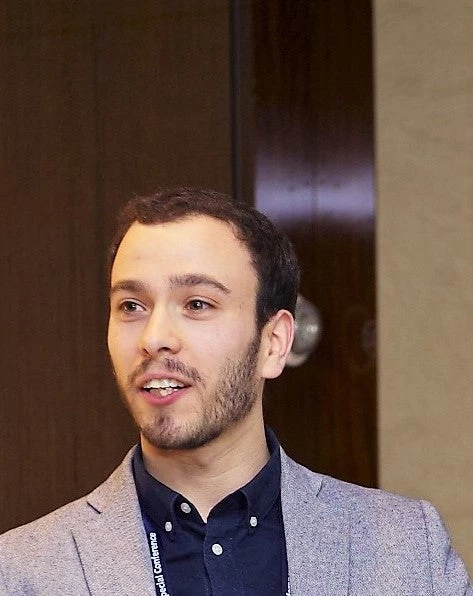Note: A more recently updated version of the numbers and chart below is available here.
COVID-19 is taking its toll on the world, causing deaths, illnesses and economic despair. But how is the deadly virus impacting global poverty? Here we’ll argue that it is pushing about 40-60 million people into extreme poverty, with our best estimate being 49 million.
Nowcasting global poverty is not an easy task. It requires assumptions about how to forecast growth and how such growth will impact the poor, along with other complications such as how to calculate poverty for countries with outdated data or without data altogether. All of this goes to say that estimating how much global poverty will increase because of COVID-19 is challenging and comes with a lot of uncertainty. Others have tried to answer the question using general equilibrium models or by exploring what will happen if all countries’ growth rates decline a fixed amount. Here we’ll try to answer the question using household survey data and growth projections for 166 countries.
In particular, we take data from the latest year for which PovcalNet (an online tool provided by the World Bank for estimating global poverty) has poverty estimates for a country and extrapolate forward using the growth projections from the recently launched World Economic Outlook, in which global output is projected to contract by 3% in 2020. This approach assumes that countries’ growth accrues equally to everyone, or in other words that COVID-19 does not change inequality within countries (more on that below). Comparing these COVID-19-impacted forecasts with the forecasts from the previous edition of the World Economic Outlook from October allows for an assessment of the impact of the pandemic on global poverty. Of course other factors may have also worsened (or improved) countries’ growth outlooks between October and April but it’s safe to say that most of the changes in the forecasts are due to COVID-19.
Such forecasts reveal that COVID-19 is likely to cause the first increase in global poverty since 1998 , when the Asian Financial Crisis hit. With the new forecasts, global poverty—the share of the world’s population living on less than $1.90 per day—is projected to increase from 8.2% in 2019 to 8.6% in 2020, or from 632 million people to 665 million people. Compare this with the projected decline from 8.1% to 7.8% over the same time period using the previous World Economic Outlook forecasts. The slight change from 8.2% to 8.1% for 2019 happens because the revised growth forecasts also changed for non-COVID reasons for some countries. Taking this into account, it means that COVID-19 is driving a change in our 2020 estimate of the global poverty rate of 0.7 percentage points — (8.6%-8.2%)-(7.8%-8.1%). Another way to put this is that the estimates suggest that COVID-19 will push 49 million people into extreme poverty in 2020 .
The places where the virus is taking its highest toll depends primarily on two factors: 1) the impact of the virus on economic activity and 2) the number of people living close to the international poverty line. IMF projects that advanced economies will contract by around 6% in 2020 while emerging markets and developing economies will contract by 1%. Yet with more people living close to the international poverty line the developing world, low- and middle-income countries will suffer the greatest consequences in terms of extreme poverty. Though Sub-Saharan Africa so far has been hit relatively less by the virus from a health perspective, our projections suggest that it will be the region hit hardest in terms of increased extreme poverty. 23 million of the people pushed into poverty are projected to be in Sub-Saharan Africa and 16 million in South Asia.
At the country-level, the three countries with the largest change in the number of poor are estimated to be India (12 million), Nigeria (5 million) and the Democratic Republic of Congo (2 million). A big caveat to the India number is that the latest poverty estimates we have from there are from 2011-12. This makes it very difficult to get an accurate picture of poverty in India before the pandemic took off, let alone a picture of poverty today. Countries such as Indonesia, South Africa, and China are also forecasted to have more than one million people pushed into extreme poverty as a consequence of COVID-19. When looking at the impact of the pandemic on higher poverty lines, for example the number of people living on less than $3.20 or $5.50 per day, more than 100 million people will be pushed into poverty. Latin America & Caribbean, East Asia & Pacific and the Middle East & North Africa are all expected to have at least 10 million more people living on less than $5.50 per day.
One way to gauge the uncertainty around these headline numbers is to explore what will happen under slightly more optimistic or pessimistic scenarios. For example, what would happen if growth in all countries were 1 percentage points lower or higher than the World Economic Outlook projections? And what would happen if COVID-19 changes inequality in countries? We know that low-income workers are more likely to lose their jobs as a result of COVID-19, but what does this imply for the poor in Sub-Saharan Africa, many of whom are subsistence farmers? And what about the many emergency packages countries have implemented to assist the most vulnerable households? And what about the decline in wealth from the fall in the stock market which is likely to hit the well-off most? COVID-19 will likely impact countries’ inequalities differently.
What would happen if alongside the deteriorated growth forecasts inequality as measured by the Gini coefficient increased or decreased by 1% in all countries in 2020? 1% changes in the Gini from year to year are very common, what is less common is that these changes go in the same direction in all countries. To measure the impact of increased inequality, we need to make another assumption: how is inequality increasing? Is COVID-19 only hurting the very bottom of the distribution or is the middle class also affected? Here we assume something closer to the latter (which in technical terms will amount to implementing the change in the Gini using a linear growth incidence curve, following this approach).
When changing the growth and inequality assumptions, the projections suggest global poverty estimates in the range of 8.4% and 8.8%, or in other words that the number of people pushed into extreme poverty will be roughly between 40 and 60 million. In the more pessimistic scenarios, global poverty in 2020 would be close to the level in 2017—meaning that world’s progress in eliminating extreme poverty would be set back by three years.





Join the Conversation